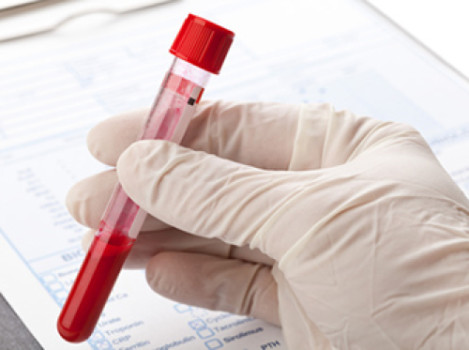
A current study by the MedUni Vienna has shown that changes to the “good cholesterol” HDL (High-Density Lipoprotein) can be associated with cardiovascular diseases: by developing a new laboratory test, scientists at the Institute of Medical Genetics and the Department of Nephrology & Dialysis (University Department of Internal Medicine III) at the MedUni Vienna have demonstrated for the first time that the presence of certain proteins in the HDL can lead to an increased risk of cardiovascular disease and mortality.
HDL (High-Density Lipoprotein) is a class of proteins that plays a key role in the body’s metabolism of cholesterol. HDL causes the cholesterol to be transported to the liver, where it is broken down. This gives rise to the popular name for HDL of “good cholesterol.” A team led by Thomas Weichhart (Institute of Medical Genetics), Marcus Säemann and Chantal Kopecky (both from the Department of Nephrology & Dialysis at the University Department of Internal Medicine III) have demonstrated in a study involving over 1,200 patients that the presence of two specific proteins in the good HDL can be associated with a poorer prognosis in diabetic patients who require dialysis. The study has just been published in the Clinical Journal of the American Society of Nephrology.
High HDL levels are generally regarded as the best type to have and are believed to protect against cardiovascular diseases such as heart attacks and strokes. Clinical practice currently only measures the amount of cholesterol in the HDL (known as the HDL-C) and the protective effect against future cardiovascular disease is derived from this. This relationship may hold true for the healthy population. More recent research has shown, however, that in many chronic diseases such as coronary heart disease, diabetes mellitus or in patients receiving dialysis, the quantity of HDL-C in the blood cannot be used as a prognostic marker. As a result, new methods are needed in order to better estimate the risk of cardiovascular disease.
HDL is made up of only around 20 per cent cholesterol; over 50 per cent of HDL is made up of different proteins. And it is precisely this protein composition that changes in the presence of a number of different diseases. The researchers from Vienna have already demonstrated in an earlier study that two proteins in particular, namely Serum Amyloid A (SAA) and Surfactant Protein B (SP-B), are significantly raised in the HDL of dialysis patients, and these also contribute towards HDL losing its protective effect.
Test measures “dangerous” proteins
The scientists have now developed an innovative test that can quickly and directly measure the SAA and SP-B in the HDL. The HDL protein composition in over 1,200 patients requiring dialysis was analysed using this test. The results were clear. High levels of SAA in the HDL were associated with an increased occurrence of heart attacks, while high levels of SP-B in the HDL acted as a marker for a generally increased risk of mortality. This discovery could change the evaluation of HDL. “The HDL-C value continues to remain important, however the new test will also in future allow a much more precise risk prediction for cardiovascular diseases,” explain the study authors, “allowing therapy to be commenced much earlier, for example through a modified lifestyle, in order to decisively improve the overall prognosis.”
The laboratory test is currently being evaluated in other patient collectives in order to confirm the results in relation to other diseases such as coronary heart disease, in which the SAA and SP-B are also raised. The laboratory test is not yet being carried out routinely; an Austrian company is however currently working on its market launch.
Story Source:
The above story is based on materials provided by Medical University of Vienna. Note: Materials may be edited for content and length.
Journal Reference:
- C. Kopecky, B. Genser, C. Drechsler, V. Krane, C. C. Kaltenecker, M. Hengstschlager, W. Marz, C. Wanner, M. D. Saemann, T. Weichhart. Quantification of HDL Proteins, Cardiac Events, and Mortality in Patients with Type 2 Diabetes on Hemodialysis. Clinical Journal of the American Society of Nephrology, 2014; DOI: 10.2215/CJN.06560714
